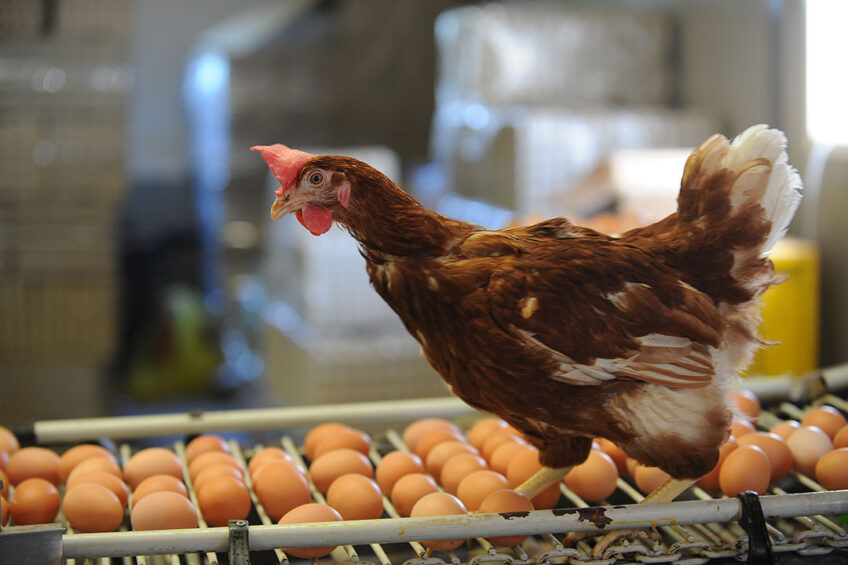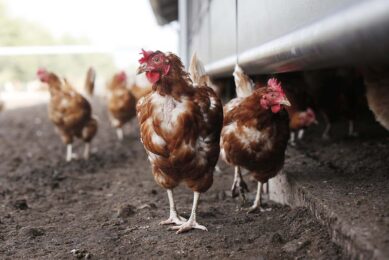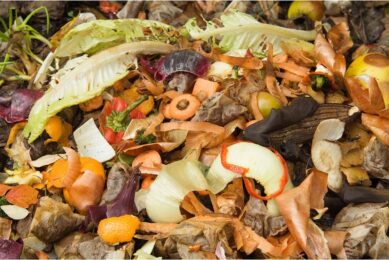Improving shell quality and egg quantity with the right minerals

Through years of genetic improvement layers have been selected for their ability to lay an egg every day. But as with human top athletes, all the variables need to be right for optimal performance. Nutrition plays a key part in this, more specifically, precision trace mineral inclusion in the ration. Alice Hibbert, Trouw Nutrition’s global programme manager for trace minerals, talked about this during an online seminar.
In an ideal situation, an egg farmer hopes to have an egg a day per housed hen across the entire laying cycle. Given the commercial production pressures, this proves impossible, so the next quest is to get as close as possible to that situation. However, there are many variables which stand in the way of achieving it. Apart from the fact that even high-producing hens tend to skip a day now and then, older hens produce less and certain stressors too, can impact overall production. Disease status and pressure, heat stress and negative nutritional interactions will all affect egg production performance. And it does not end there. Suboptimal conditions not only impact egg numbers, but egg quality as well. Plus, an increase in the number of cracked eggs or second grade eggs will have a significant negative effect on the overall farm performance.
Mitigating stressors
To form the best egg possible, the hen needs the proverbial building blocks necessary to do so. That means presenting them with the blocks on a silver platter, via the feed. Alice Hibbert: “When we look at commercial layer production, eggshell quality and numbers are the most important key performance indicators (KPIs). That is where trace minerals come into play. Trace minerals are vital as they have many important functions within the body and in the bird’s metabolism. The level of trace minerals in our main feed ingredients is generally quite low, so we cannot be sure that the animal gets its nutritional requirements met just from feeding these raw materials alone. This defines the essential requirement to supplement trace minerals in the feed in order to make sure the animal is getting its real nutritional requirements met. The bird needs more trace mineral to support immune function when there is high disease pressure, placing its immune system under pressure.”
Source and amount of trace minerals
“When we talk about trace minerals in feed, it is important to consider the source and the amount of trace minerals, that can be absorbed into the bloodstream, thereby making it available to support these important functions. It is worth mentioning that the reactivity of different trace mineral sources in feed can hugely affect the availability or bio-vailability of the trace mineral in the small intestine (absorption site). Bio-availability is really important when considering the trace mineral source you are going to utilise in feed which will then have a knock-on effect on how the trace mineral can support bodily functions, and ultimately profitability and performance.
Zinc, copper and manganese are the 3 most important trace minerals and they have both catalytic and structural properties
Egg formation
Hibbert continues: “There are many different ways that trace minerals have an interaction with the quality of egg shells. Zinc, copper and manganese are the 3 most important trace minerals and they have both catalytic and structural properties. There are various enzymatic reactions required to make the components of the shell. Zinc catalyses carbonic anhydrase, which is needed to deposit calcium carbonate in the shell matrix, Copper is required for the synthesis of collagen found in eggshell membranes and manganese helps to deposit proteins in the eggshell matrix. Supplementation of these trace minerals can improve eggshell breaking strength and decrease the percentage of broken eggs.”
Trace mineral requirements change
As a trace mineral expert, Hibbert knows that the trace mineral requirements of birds change over time. “Laying hens need more support at certain stressful periods in the laying cycle, especially during early lay until peak production and again in late lay. In early lay the bird has to adjust to producing a larger number of eggs, sometimes resulting in worse eggshell quality. In late lay the egg number is reduced and again, egg quality may drop. This happens for a number of different reasons, such as declining gut health and ability to absorb nutrients, as well as the fact that the birds needs to mobilize calcium from the bone to form eggs.” Research shows that with the aging hen, as egg size increases, eggshell thickness and mass decreases by close to 10%, resulting in more cracked eggs.
Supporting the bird
In modern-day production it is essential to supplement trace minerals in feed in order to meet the birds’ requirements. This is why Trouw Nutrition has carried out extensive trial work focusing on the chemistry of trace mineral sources. “You want to help the bird as efficiently as possible, supplementing to match the birds’ requirements, optimising input, to prevent excess output in faeces which can be harmful to the environment. It is important to avoid undersupply, which can occur during a ‘stressful event’ such as the onset of lay, or a disease challenge when there will be an increase in the trace mineral requirement. However, oversupply can lead to toxicity and environmental waste. In short, there is more to trace mineral sources than previously thought, says Hibbert.
Our studies show that a superior source of zinc, copper and manganese can further improve egg production and reduce the number of cracked egg
Common inorganic sources
In daily practice, many producers utilise cheaper, more commoditised trace mineral sources, such as sulphates and oxides. However, these sources are extremely reactive in feed and can have a negative impact on feed quality and offer minimal bio-availability. Hibbert explains: “We saw that the hydroxy trace minerals are absorbed most efficiently compared to the common inorganic sources, such as sulphates, which can easily solubilse in the feed and the GIT, binding to dietary antagonists, rendering them unavailable for absorption in the small intestine. These insoluble complexes are excreted in the faeces resulting in wasted product, as well as higher excretion into the environment.”
She concludes: “Our studies show that a superior source of zinc, copper and manganese can further improve egg production and reduce the number of cracked eggs. A highly bio-available trace mineral source can also mitigate the effects of heat stress on performance. The key is to utilise an improved trace mineral source to improve bio-availability, thereby optimising trace mineral levels in feed to match the birds’ requirements. This level may increase in times of stress throughout the production cycle, but has a clear economic upside when the performance benefits of switching sources are taken into account. The best farm-specific approach can be discovered with the help of our experts.”
Join 31,000+ subscribers
Subscribe to our newsletter to stay updated about all the need-to-know content in the poultry sector, three times a week. Beheer
Beheer








 WP Admin
WP Admin  Bewerk bericht
Bewerk bericht